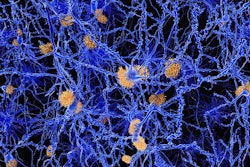
By using women's menopausal status and levels of beta-amyloid plaque as markers for possible progression to Alzheimer's disease, researchers are hoping to determine the best time to begin treatment to slow the onset of the condition, according to a study published online December 12 in PLOS One.
The prime strategy is the use of PET imaging with carbon-11-labeled Pittsburgh Compound B (PiB), which binds to beta-amyloid plaque in the brain. Through this approach, the researchers found a significant increase in amyloid among perimenopausal and menopausal women between the ages of 45 and 60 years.
"Overall, these findings provide a plausible rationale for greater prevalence of Alzheimer's disease in women due to earlier initiation of pathology during the aging process," wrote lead author Lisa Mosconi, PhD, from Weill Cornell Medicine and colleagues. The results also "indicate a time frame of the perimenopause-to-menopause transition for early intervention to prevent and delay progression of Alzheimer's in women."
The researchers enrolled four groups of participants: 15 premenopausal women, 14 perimenopausal women, 12 postmenopausal women, and 18 men. Other than the postmenopausal women being significantly older than the other women, there were no significant differences in terms of clinical and demographic characteristics, apolipoprotein E (APOE) ε4 genotype frequency, and family history of Alzheimer's.
The researchers used PiB-PET to determine beta-amyloid deposition and FDG-PET and 3-tesla structural MRI to assess signs of neurodegeneration, specifically targeting the posterior cingulate cortex and the prefrontal cortex.
They found that older age was associated with higher amyloid levels in both brain regions among all female subjects. When the researchers adjusted for APOE status and vascular risks, postmenopausal women showed significantly higher levels of amyloid in the posterior cingulate and frontal cortexes than premenopausal women and men did (p ≤ 0.001). The perimenopausal group showed significantly higher rates of amyloid in the frontal cortex, compared with the premenopausal group and men (p < 0.011).
The telltale factor in differentiating age-related amyloid accumulation between the four groups was PiB uptake. From baseline imaging to follow-up scans three years later, PiB uptake increased in the frontal cortex and the posterior cingulate cortex among postmenopausal and perimenopausal women, while premenopausal women and men experienced only minimal PiB uptake.
| Increase in PiB uptake as a sign of greater amyloid deposition* | ||
| Frontal cortex | Posterior cingulate cortex | |
| Postmenopausal women | 6.3% | 8.6% |
| Perimenopausal women | 4.5% | 6.2% |
| Premenopausal women | < 1% | < 1.3% |
| Men | < 1% | < 1.3% |
The results indicate that menopausal changes "may, in part, account for the increased Alzheimer's disease risk in women," the researchers concluded. "Chronologically, age of menopause maps onto the time course for initiation of the prodromal phase of Alzheimer's disease, which typically begins 15 to 20 years before clinical diagnosis."



















